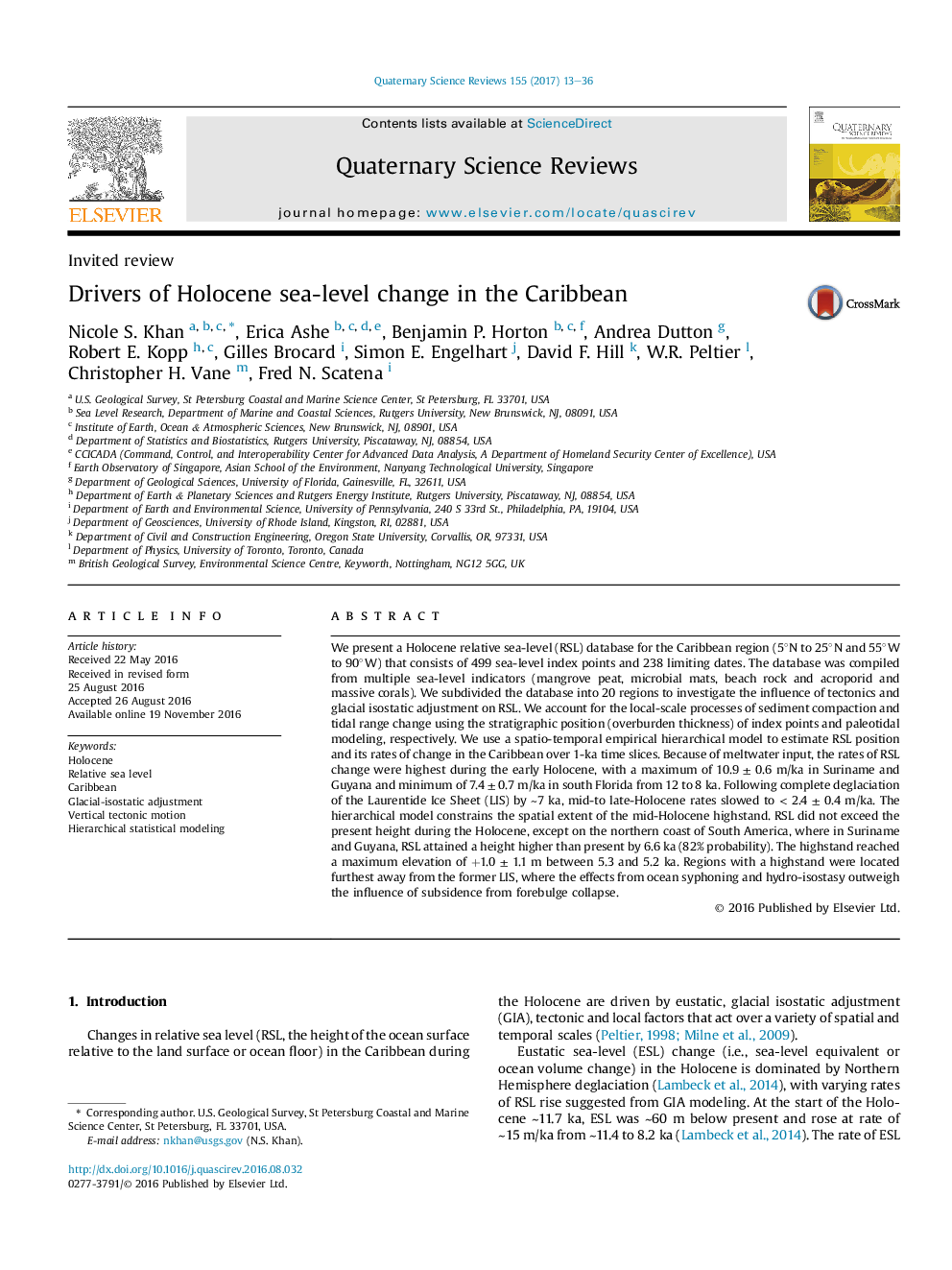| کد مقاله | کد نشریه | سال انتشار | مقاله انگلیسی | نسخه تمام متن |
|---|---|---|---|---|
| 5786836 | 1640780 | 2017 | 24 صفحه PDF | دانلود رایگان |
- Holocene relative sea-level (RSL) data from the Caribbean is compiled from sedimentary, geomorphic, and coral indicators.
- RSL data were corrected for local-scale processes of sediment compaction and tidal range change.
- A spatio-temporal statistical model estimates the position and rates of RSL change.
- Rates were 7-11 m/ka from 8-12 ka from meltwater input and slowed to <2 m/ka after Laurentide deglaciation at 7 ka.
- Only Suriname and Guyana exhibited higher RSL than present (82% probability), reaching a maximum height of â¼1 m at 5.2 ka.
We present a Holocene relative sea-level (RSL) database for the Caribbean region (5°N to 25°N and 55°W to 90°W) that consists of 499 sea-level index points and 238 limiting dates. The database was compiled from multiple sea-level indicators (mangrove peat, microbial mats, beach rock and acroporid and massive corals). We subdivided the database into 20 regions to investigate the influence of tectonics and glacial isostatic adjustment on RSL. We account for the local-scale processes of sediment compaction and tidal range change using the stratigraphic position (overburden thickness) of index points and paleotidal modeling, respectively. We use a spatio-temporal empirical hierarchical model to estimate RSL position and its rates of change in the Caribbean over 1-ka time slices. Because of meltwater input, the rates of RSL change were highest during the early Holocene, with a maximum of 10.9 ± 0.6 m/ka in Suriname and Guyana and minimum of 7.4 ± 0.7 m/ka in south Florida from 12 to 8 ka. Following complete deglaciation of the Laurentide Ice Sheet (LIS) by â¼7 ka, mid-to late-Holocene rates slowed to < 2.4 ± 0.4 m/ka. The hierarchical model constrains the spatial extent of the mid-Holocene highstand. RSL did not exceed the present height during the Holocene, except on the northern coast of South America, where in Suriname and Guyana, RSL attained a height higher than present by 6.6 ka (82% probability). The highstand reached a maximum elevation of +1.0 ± 1.1 m between 5.3 and 5.2 ka. Regions with a highstand were located furthest away from the former LIS, where the effects from ocean syphoning and hydro-isostasy outweigh the influence of subsidence from forebulge collapse.
Journal: Quaternary Science Reviews - Volume 155, 1 January 2017, Pages 13-36
